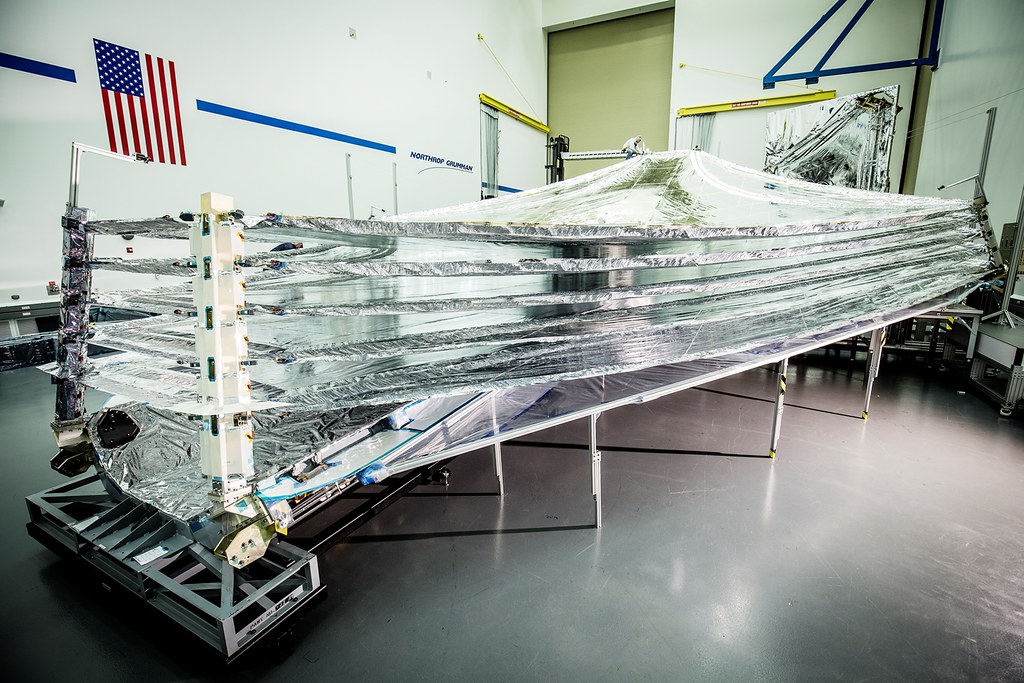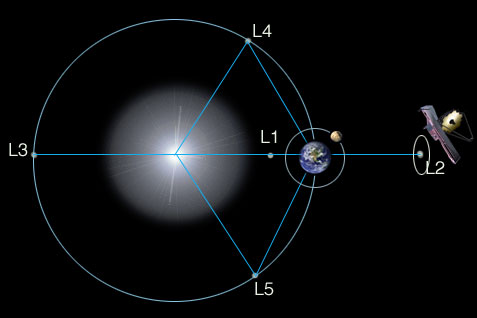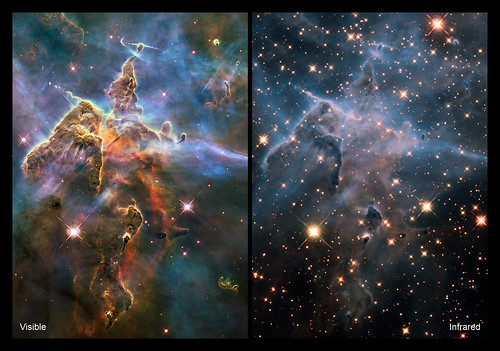
NASA recently launched the James Webb Space Telescope (JWST) as a successor of the Hubble Space Telescope. Development of the telescope started in 1996 and has taken around 25 years to make! JWST was launched on December 25, 2021 at 12:20 UTC (7:20 AM EST) as a Christmas present to the world.
Unlike the Hubble Space Telescope that orbits the Earth, the James Webb Space Telescope will orbit the Sun. To prevent the telescope from catching on fire and damaging the sensitive components, NASA engineers attached an exceptionally strong sunshield that is similar to the size of a tennis court.
The sunshield has 5 layers, each made out of Kapton and coated with aluminum. The first two layers of the sunshield are treated with a doped silicon coating to reflect the sun’s heat.
Kapton is a material with high heat resistance, meaning that it does not melt or burn across a wide range of temperatures (-269℃ to +400℃), so it is especially useful for a sunshield.
The silicon coating for the first two layers was doped to make it electrically conductive and prevent static energy.
The sunshield has a kite shape and is folded at launch. When JWST reaches its final destination, the sunshield will unfold.
Where will the telescope be located?

The James Webb telescope will be orbiting the second Lagrange point (L2). The Lagrange point was discovered by the 18th-century mathematician Joseph-Louis Lagrange. Lagrange was attempting to find a place where 3 masses could orbit each other but still stay in the same position relative to each other. That basically means that the angle of the orbiting masses will stay the same no matter how long the masses are in orbit.
Lagrange used physics to solve this problem. The centripetal acceleration, or the speeding up and slowing down of an object in orbit, had to equal the gravitational pull of the other two large objects (in this case, the Sun and the Earth).
The idea of using Lagrange points is not recent—space organizations have already placed other satellites there, such as WMAP (Wilkinson Microwave Anisotropy Probe), Herschel (European Space Agency’s Observatory), and Planck (European Space Agency’s radiation observer).
Why James Webb telescope? Isn’t Hubble enough?

The Hubble Space Telescope was launched in 1990, so it doesn’t really have the most updated technology. Hubble had some limitations, one of them being that its size had to be restricted in order to fit inside the head of a rocket. A smaller telescope means a smaller mirror, which in turn means far objects cannot be detected very well. Hubble’s mirror is 2.4 meters in diameter, while Webb’s mirror is around 6.5 meters in diameter, almost triple the size! An additional bonus is that Webb’s mirror can fold and be remotely adjusted from Earth when necessary.
As described above, Webb will go farther out into space than ever before. This will allow scientists to see deep into the farthest reaches of the universe.
Webb also takes pictures in a different way than Hubble. Webb will take pictures of the universe in infrared, while Hubble takes pictures of optical and ultraviolet wavelengths of light.
Webb’s main purpose is to find the first galaxies that formed in the early universe.
The James Webb Space Telescope is expected to be fully operational and taking pictures in about 6 months, which will be in June 2022. Until then, enjoy the pictures that the Hubble Space Telescope is taking!
Sources:
Comparison: Webb vs Hubble Telescope - Webb/NASA
James Webb telescope launched to view the early universe | Natural History Museum
